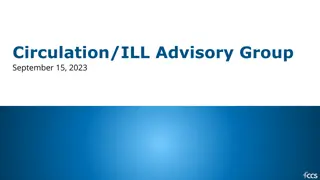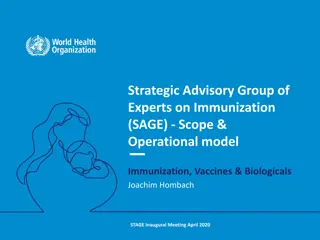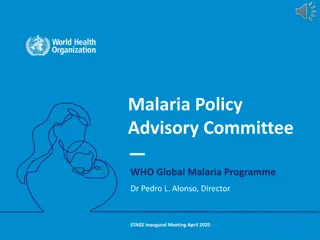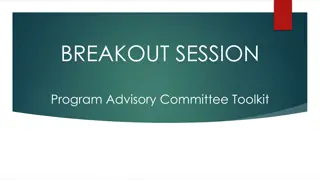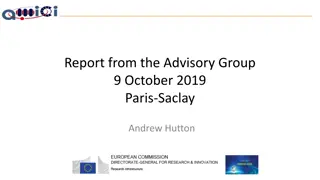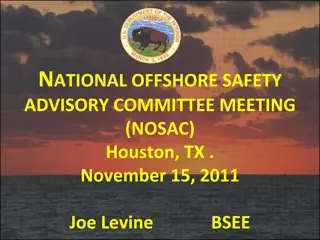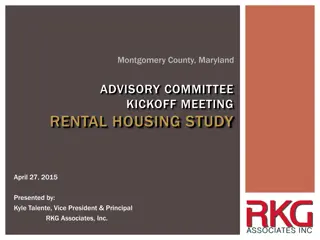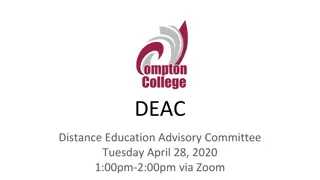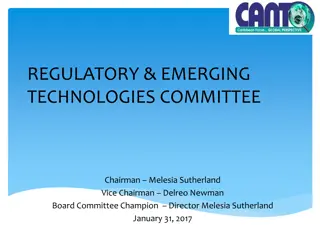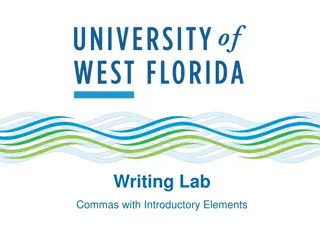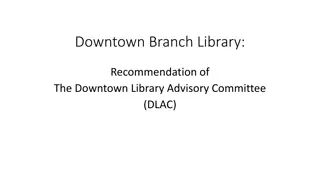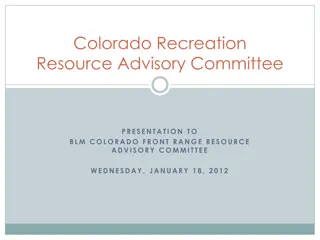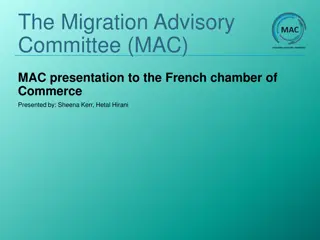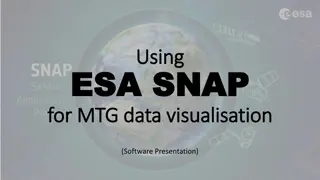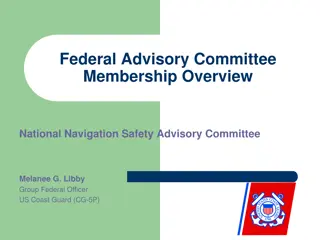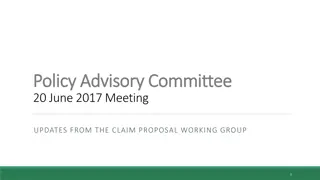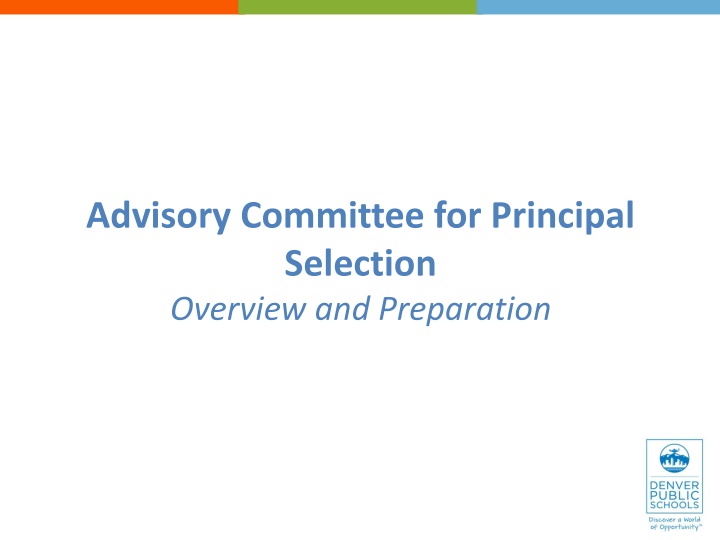
School Leadership Selection and Advisory Committee Overview
Discover the role and process of the Advisory Committee for Principal Selection, including discussions on school leader priorities, the DPS School Leadership Framework, and the high-level overview of the selection process. Gain insights into the key indicators for principal selection and the expectations for effective school leadership to guide the selection, support, and evaluation of school leaders.
Download Presentation

Please find below an Image/Link to download the presentation.
The content on the website is provided AS IS for your information and personal use only. It may not be sold, licensed, or shared on other websites without obtaining consent from the author. If you encounter any issues during the download, it is possible that the publisher has removed the file from their server.
You are allowed to download the files provided on this website for personal or commercial use, subject to the condition that they are used lawfully. All files are the property of their respective owners.
The content on the website is provided AS IS for your information and personal use only. It may not be sold, licensed, or shared on other websites without obtaining consent from the author.
E N D
Presentation Transcript
Advisory Committee for Principal Selection Overview and Preparation
Agenda Overview of the School Leader Selection Process Introduction to the School Leader Selection Process The Framework for Effective School Leadership Key Indicators for Principal Selection The Role of the Advisory Committee Advisory Committee Discussion School Leader Selection Priorities School Life Cycle School Size School Programs/Student Needs School Context Wrap-up and Next Steps Summary of key priorities Interview Questions
DPS School Leadership Framework Denver Public Schools has developed a School Leadership Framework that is being used both as a common definition for effective school leadership and as a tool to select, evaluate and provide professional learning opportunities for principals. This Framework guides all of the district s work in selecting, supporting, and evaluating school leaders. The Expectations, Indicators and Behaviors identified in this Framework define the types of skills, abilities and aptitudes that future and current DPS Principals need to be able to demonstrate.
High-level Overview: School Leader Selection Process Superintendent Interview and Offer Finalist Engagement: Learning Walk & Community Forum School Principal Search Advisory Committee Applicant Screening for Qualified Principal Candidate Pool Talent Acquisition Pre-Screen
Introduction to the SPSAC The school committee s role is to provide advisory input to the Instructional Superintendent as they recommend finalist candidates to the superintendent for hire. The committee will meet with the Instructional Superintendent to review the selection process and talk through the schools characteristics, priorities, and needs as related to what the committee seeks in a new school leader. Once this meeting is complete, the I.S. or E.D. will work with the committee to add questions to the select interview questions from the question bank. The committee will receive training in interviewing and effective/ethical practices in interviewing by a Human Resources Partner. The committee will conduct the interview process, collecting evidence on the interview rubric form. The Instructional Superintendent will develop a summary of the Framework- based strengths and needs of each candidate and provide this summary to the Superintendent for review and selection of Finalist candidates.
SPSAC Membership The Instructional Superintendent/Executive Director will provide for approval of the Advisory Committee membership and will serve as co- chair. The remaining eight to ten members must be representative of the diversity of the school population and will be selected by the school s CSC with the following level of representation: Five building staff members. This must include three teaching staff members and one non-teaching staff member; the fifth may be any member of the school staff. The current principal is not eligible to serve on the committee. Three to five parent/guardian and community members. The members must include one parent or guardian of a student currently enrolled in the school and one CSC representative. The IS/ED reserves the right to refer the composition of the proposed Advisory Committee back to the CSC to ensure adequate representation of the whole community.
School Leader Selection Focus Areas Which areas of focus will be most critical for our school in the next one to five years? 1. School Life Cycle 2. School Size 3. School Programs/ Student Needs 4. School Context
Group Discussion: School Life Cycle, Which Are We? HIGH ACHIEVING School that consistently exceeds district student achievement standards, with Distinguished accreditation ratings STEADY School consistently meets district standards, with consistent Meets Expectations or Accredited on Watch accreditation ratings IN FLUX School curricular focus, student or community demographic is undergoing rapid change NEW Starting a school from scratch either in a new or existing building TURNAROUND School consistently receives Accredited on Priority Watch or Accredited on Probation ratings Student achievement has been low and stagnant or decreasing for several years in a row Not in need of significant change to maintain high student achievement School has not recently had significant increases in student achievement School is in need of a significant change in direction to improve student achievement
What Activities Will be Most Critical for Our School Leader? HIGH ACHIEVING Maintain strong culture of high achievement STEADY Identify opportunities for instructional improvement and create a sense of urgency to move student achievement Consistently develop a pipeline of great staff Some examples Develop a new vision and counsel staff to improve instructional outcomes Successfully manage relationships with parents and staff Focus on continuous improvement Ensure accountability at all levels IN FLUX Maintain focus on rigorous instruction through change NEW Select and place a high quality staff TURNAROUND Ensure the best quality staff Create and inspire others towards new vision Intense focus on improving instruction Help others adapt to change Personally adapt to change Establish processes and policies that lead to safe, student-centered and efficient building Set challenging goals and make sure they are achieved Anticipate and make necessary changes to school facility, staff or instruction Use resources creatively Build a school community focused on building a college and career going culture Use personal impact rather than organizational mandate to effect change in school
Group Discussion: School Size, Where Do We Fall? SMALL LARGE >500 (E.S./M.S.); >700 (H.S.) May be difficult to personally know each student and their family Definition <500 (E.S./M.S.); < 700 (H.S.) School leader can personally know each student and family School leader may have limited interaction with all staff members; need to maintain accountability School leader is often personally engaging with individual staff members Context School leader may need to get work done through others; staff members may take on administrative responsibilities School leader may take care of most administrative activities Facilities may be large and physically spread-out What would we add or change about the context description for our school?
Group Discussion: School Programs/Student Needs What specific school programs or student needs will be important for our new principal to understand and manage effectively? Samples Definitions Magnet and Specific programmatic focus School has a specific programmatic or curricular focus, including American Indian, Arts, Dual-Language, Expeditionary Learning, International Baccalaureate, International, Montessori and Science, High AP participation, Career and Technical Education, etc. School implements innovative practices to improve student outcomes. Innovation School may petition to waive district policies for increased flexibility. School has a high percentage of students designated as highly gifted and talented Highly Gifted and Talented Programs Students participate in screening to receive the designation and to be admitted into a Highly Gifted Program High percentage of students are learning English as a second language English Language Acquisition Program High Special Education Population Early Childhood Focus High special needs population, or significant Special Education compliance issues within the school School may be limited to Pre-K to 3, or may have a specific early childhood program as a core school focus Intensive
Group Discussion: School Context What is happening in the school community that will affect our new school leader? Samples Definition Sustaining Success High degree of satisfaction among stakeholders Consensus that school has done well over the years and priority is to maintain status quo Previous leadership highly regarded; leadership change is regretted by school community General distrust of outsiders or central office involvement in school decisions Internally Focused Staff has long tenure and is protective of current school culture Recent turmoil in the school has led to mistrust among staff and/or community members Politically Charged High need for relationship building and realignment of stakeholders
Group Discussion: What areas of focus will be most critical for our school in the next one to five years 1. School Life Cycle 2. School Size 3. School Programs/Student Needs 4. School Context
Group Discussion: What work experience or credentials should we look for in a candidate? 1. School Life Cycle 2. School Size 3. School Programs/Student Needs 4. School Context

